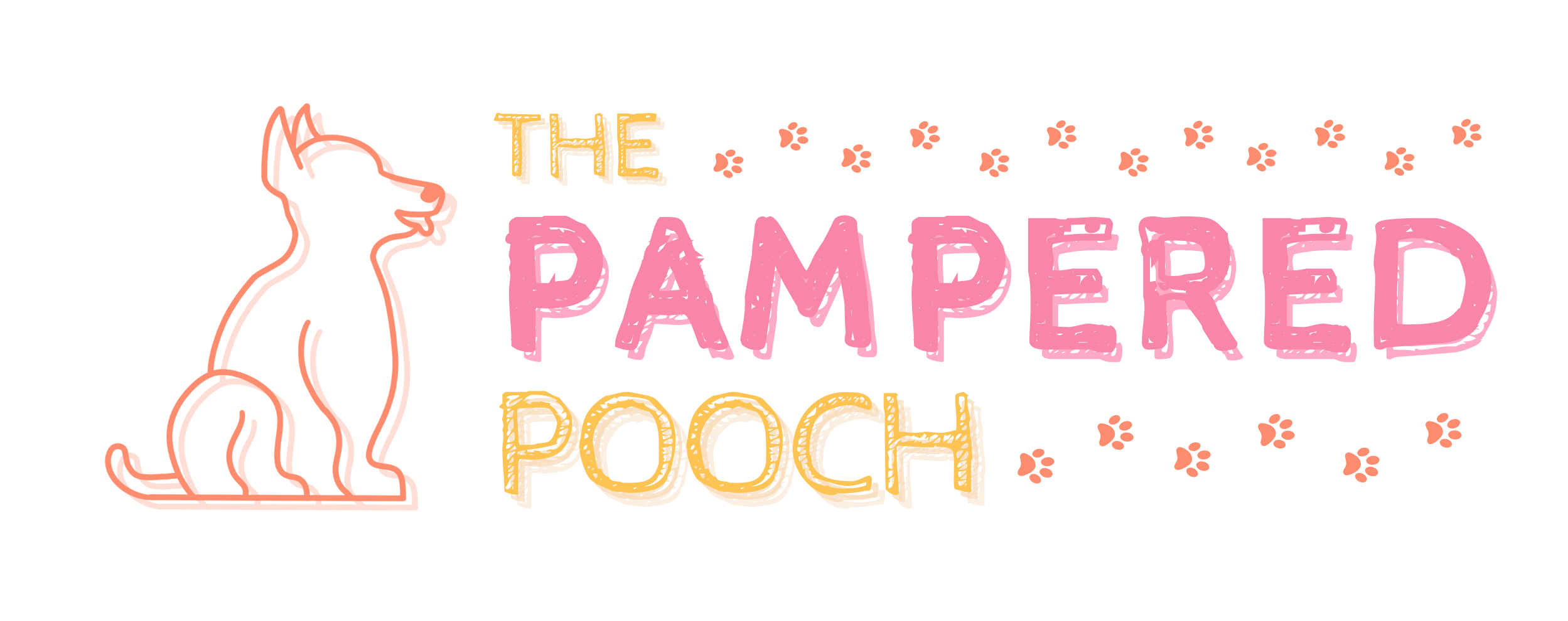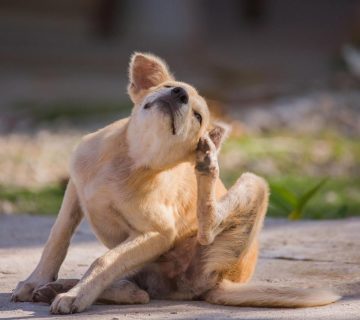How to Keep Your Dogs Coat Healthy
Dogs are like family, and that means taking care of them just like you would for any other family member. That includes keeping your dog healthy and happy. But how do you go about keeping your pup’s skin and coat in tip-top shape? Read on to find out all the best tips and tricks to keep your pup’s coat healthy!
Having a healthy, shiny coat is an important barometer for your dog’s overall health. Not only does regular grooming keep your pet looking and feeling great, but it can also help them avoid painful matting and skin issues.
Whether you have a long-haired or short-haired pup, understanding how to properly care for your dog’s coat is essential for their well-being and happiness. Here are five tips to help ensure that your pup always has a healthy coat:
Regular Grooming
Brush your pooch regularly with a slicker brush, getting right down to the skin so that any dirt trapped in the fur can be removed. This also helps stimulate the natural oils in their coat while redistributing them throughout their fur, leaving it shiny and lustrous after each brushing.
Healthy Diet
Quality nutrition is key when it comes to having healthy skin and fur. Be sure to feed your pet food made from wholesome ingredients so they are getting all the nutrients they need for a radiant coat
Trimming
When necessary, carefully trim away any fur around the eyes, ears, or paws as this will help keep them clean of bacteria that can cause unpleasant odors or irritations, and infections
Regular Baths
Bathe your pup regularly with an appropriate shampoo designed specifically for dogs as this helps remove excess dirt and oils on the surface of their coat while maintaining its natural shine
Hydration
Just like us humans, furry friends need plenty of water to stay hydrated – so make sure they always have access to fresh drinking water both indoors and out!
Understanding the Basics of Dog Coat Health
Maintaining the health of your dog’s coat is key to preserving their overall wellness. A proper understanding of how good coat health contributes to a happy, healthy canine can help you provide the best possible care for your pup.
The foundation of healthy fur is healthy skin. Dogs’ coats are composed of two types of hair: primary and secondary. Primary hairs are longer, tougher and more course in nature and make up your dog’s visible outer coat. Secondary hairs are much finer, shorter and softer and can often be seen as downy inner coat material beneath the primary hairs. Healthy skin provides a base for both types of hair which helps create strong, beautiful fur that can last throughout your pet’s life.
Your dog’s diet is one way to ensure their skin and fur remain in top condition. High-quality food specially designed for pets produces robust curled-tip coats full of correct balance moisture and oils that will give them a soft, glossy appearance from head to toe with minimal dander or shedding when brushed regularly.
In addition to regular brushing or combing to remove dead hair from both primary and secondary layers that may accumulate from natural shedding, bathing every few months is important to keep the coat clean and free from bacteria or fleas that may cause skin irritation. Itching due to flea bites causes stress on their bodies resulting in further issues like loss of appetite or temperature regulation troubles which could lead to illness if left untreated.
Grooming and Brushing
Regular grooming and brushing can benefit your dog’s coat by removing dust, dirt, tangles, and mats. It also helps to spread the natural oils throughout their fur, helping to keep it looking glossy and healthy. Generally, you should aim to brush your dog’s coat a minimum of once per week. Some breeds may require more frequent brushing; two or three times per week is recommended for breeds with longer coats or those prone to matting.
Start by brushing in the direction of your dog’s fur. Doing this regularly will help reduce shedding considerably. After that, you can brush in any direction necessary to remove mats, dirt particles, and debris from the coat. When it comes time to bathe your pup, use a mild shampoo and lukewarm water as frequently as needed — but keep this part short — your pup likely won’t need long baths as often as you may think! Tear-free shampoos are best for pets with sensitive skin or eyes since they won’t strip the skin or hair of their natural oils.
It is also important to never shave down a double-coated breed such as huskies since their double-layered fur is designed for insulation and protection from the cold which helps them regulate their body temperatures both in winter and summer months. Besides that, shaving their fur would be removing one of the biggest protective barriers against pests like fleas and ticks which could leave them exposed!
Finally, If you plan on taking on regular grooming duties yourself always make sure to use appropriate pet brushes specifically designed with your breed in mind- They can make all the difference when it comes to keeping their coats looking great!
Diet and Nutritional Supplements
Diet and nutrition are the building blocks of any dog’s health, and their coat is no exception. Dogs need a balanced diet that is rich in essential fatty acids like Omega-3, which keep the skin and coat healthy. Many commercial dog foods contain these fatty acids, but they can also be supplemented by adding a daily omega-3 capsule to their food or including omega-rich treats in their diet.
The inclusion of probiotics may also be beneficial for dogs with a dull coat or one that is prone to shedding. Probiotics are dietary supplements containing beneficial bacteria that work to restore balance to your pet’s natural bacterial flora, as well as aid digestion and help absorb nutrients from food more effectively. You can buy probiotic supplements from most pet stores or vets, or you can add some naturally probiotic foods such as yogurt, kefir, or sauerkraut to their diet.
Additionally, adding raw meaty bones (without cooked bones) can be helpful for the coat since it contains the extra minerals needed for healthy skin and hair growth. Adding fresh fruits and vegetables to your pet’s diet not only adds flavor but also provides additional vitamins and antioxidants which help improve overall health — especially beneficial for dogs with sensitive coats. The fresh liver is high in iron which also helps improve coat health!
Avoiding Environmental Factors That Can Damage the Coat
Taking steps to make sure your dog’s coat is healthy is one of the most important things you can do to keep him happy and healthy. Many environmental factors can affect a dog’s coat, which can lead to problems like dry skin, irritated skin, and even hair loss. To keep your pup’s coat looking its best, here are some things to avoid:
Excessive Heat
long-haired breeds should be kept cool in hot weather by avoiding too much exposure to the sun and limiting all outdoor activities during the hottest times of day, like midday. Short-haired breeds can also need protection from overheating due to thick fur coats that trap body heat.
Allergens
Dust mites, pollen, and other airborne allergens may cause irritation or allergies in some dogs. Keep your house clean and dander-free by using an air filter, cleaning with hypoallergenic detergents, and vacuuming frequently. Also, consider using a chest harness instead of a neck collar for pups prone to allergies due to their sensitivity to synthetic materials used on collars.
Pollutants
Common air pollutants such as ozone, smoke, and aerosols may also negatively affect a pup’s coat health. Keep windows closed during high pollutant times (such as rush hour) or when there is construction in the area; this will help limit the amount of external contaminants making their way indoors.
Insufficient Grooming
Neglecting to groom can lead to matting or dryness from a lack of moisture due to dirt build-up near the skin’s surface when not groomed correctly—and often! Beard trims are particularly important as beards tend can absorb food as well as drool that left unclean may cause health problems later on.
Treating Skin Conditions That Affect the Coat
Many skin conditions can cause or contribute to coat problems, including allergies, bacterial and fungal infections, and parasites. The most common skin conditions that affect the dog’s coat include:
Bacterial Skin Infections (Pyoderma)
Bacterial skin infections can cause hair loss and result in scaly or crusted patches on the skin. Treatment includes antibiotics, shampoos, and/or topical sprays to kill the bacteria.
Fungal Skin Infections (Ringworm)
Ringworm is a contagious fungus that affects humans and animals alike. It appears as round patches of hair loss surrounded by redness, scaling, and itching. Treatment involves topical ointments or shampoos containing medications that target fungi like miconazole or terbinafine.
Environmental Allergies
Dogs may be allergic to various things in their environment such as pollens, molds, dust mites, tobacco smoke, etc. Diagnosis is based on history and allergy testing may need to be done if your vet suspects environmental allergies are causing your dog’s skin problems. Treatment involves antihistamines and/or steroids depending on the severity of the symptoms as well as avoiding triggers when possible.
Fleas
Fleas can cause intense itching leading to hair loss if left untreated for an extended period of time. A three-step approach is recommended for flea control which includes environmental control such as vacuuming carpets regularly, using adulticidal sprays or powders for direct treatment of fleas in adult pets, plus products for long-term prevention like oral tablets that offer protection from new infestations for up to 3 months.
Bathing and Shampooing
Proper bathing and shampooing help to promote a healthy coat and skin for your pet. Aim to bathe your pup every 3-4 weeks and shampoo only when necessary. This will depend on the dog’s lifestyle, level of physical activity, and general health.
Before you begin, brush out any tangles and mats from the fur in order to make the process more comfortable for the dog. Be sure to use a mild, canine-specific shampoo that hydrates skin oils while removing dirt and debris from their fur. Do not use human shampoos on your pet — these can dry out their skin, irritate eyes, and are generally not made with the same pH balance as canine skin requires.
Once you begin bathing your pet, make sure to rinse them thoroughly after lathering; any residual suds can cause further irritation or itching of their skin. Afterward, towel dry them briskly and let them air dry in a warm area until they are completely dry; cold dampness can cause pets discomfort as well as increase chances of developing hot spots or other bacteria on their skin if left unchecked. Finally, finish off their grooming routine by brushing through the dried fur using long downward strokes so that the coat is shiny but feels soft to the touch afterward!
Prevention and Maintenance Tips
Prevention and maintenance go hand in hand when it comes to your dog’s coat. Taking the time to take care of your dog’s coat can help prevent long-term problems and keep your best friend looking and feeling their best. Here are some tips to help ensure that your canine companion has a healthy and beautiful coat:
Brushing
Brushing your dog regularly is an essential part of keeping their coat healthy. It helps remove dirt, debris, and dead hair, while also stimulating oil production, improving circulation, and untangling knots. Be sure to brush down to the skin with a natural bristle brush and use an appropriate brush size for the breed of your pet.
Bathing
Avoid over-bathing as this can strip natural oils from the skin and cause dryness. When you do bathe, use lukewarm water, and mild shampoo specifically formulated for dogs, and don’t scrub too harshly or leave soap residue on their skin or in their fur. Regularly conditioning the fur can also help nourish the coat from the inside out with natural ingredients like shea butter, hemp seed oil or aloe vera extract. Finally, remember not to bathe puppies younger than six weeks old as they may be susceptible to hypothermia due to their still-developing haircoat; instead, gently wipe the puppy off externally after playing outside or a muddy adventure!
Diet
A healthy diet is essential for proper coats which is why it’s important to avoid artificial food dyes, chemical preservatives, or ugly additives when selecting food for your pup as these can impact health detrimentally over time; aim for foods that are naturally rich in minerals like zinc (good for skin integrity) & fatty acids (enhance development & shine). Also, remember that proper hydration is key since dryness could result in dullness – make sure there’s always plenty of clean water available at all times!
Supplements
Omega-3 fatty acids are known for promoting healthy coats by providing much-needed hydration from within which helps create glossier fur amongst other benefits too! If you don’t feed fish meals already in Fido’s diet (or if fish isn’t something he loves), then consider supplementing with fish oil capsules instead as they contain omega-3s among other beneficial lipids such as EPA/DHA (which promote overall health).
Additionally, omega oils have great anti-inflammatory properties that may come in handy down the road – just be sure to speak with a veterinarian first regarding dosages & suitability before starting a supplementation regimen so no harm happens!









No comment